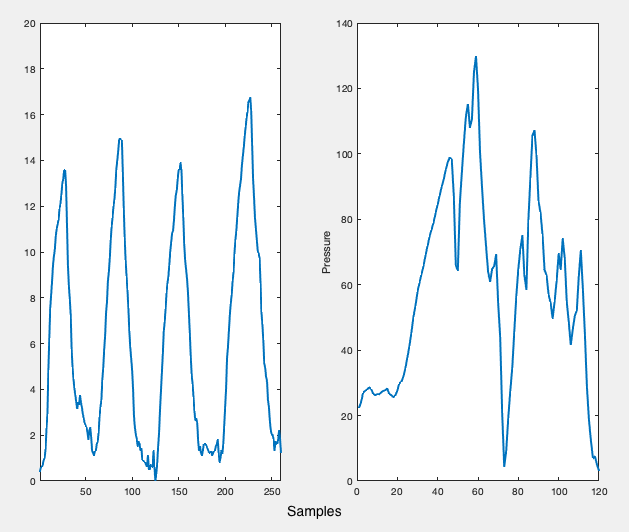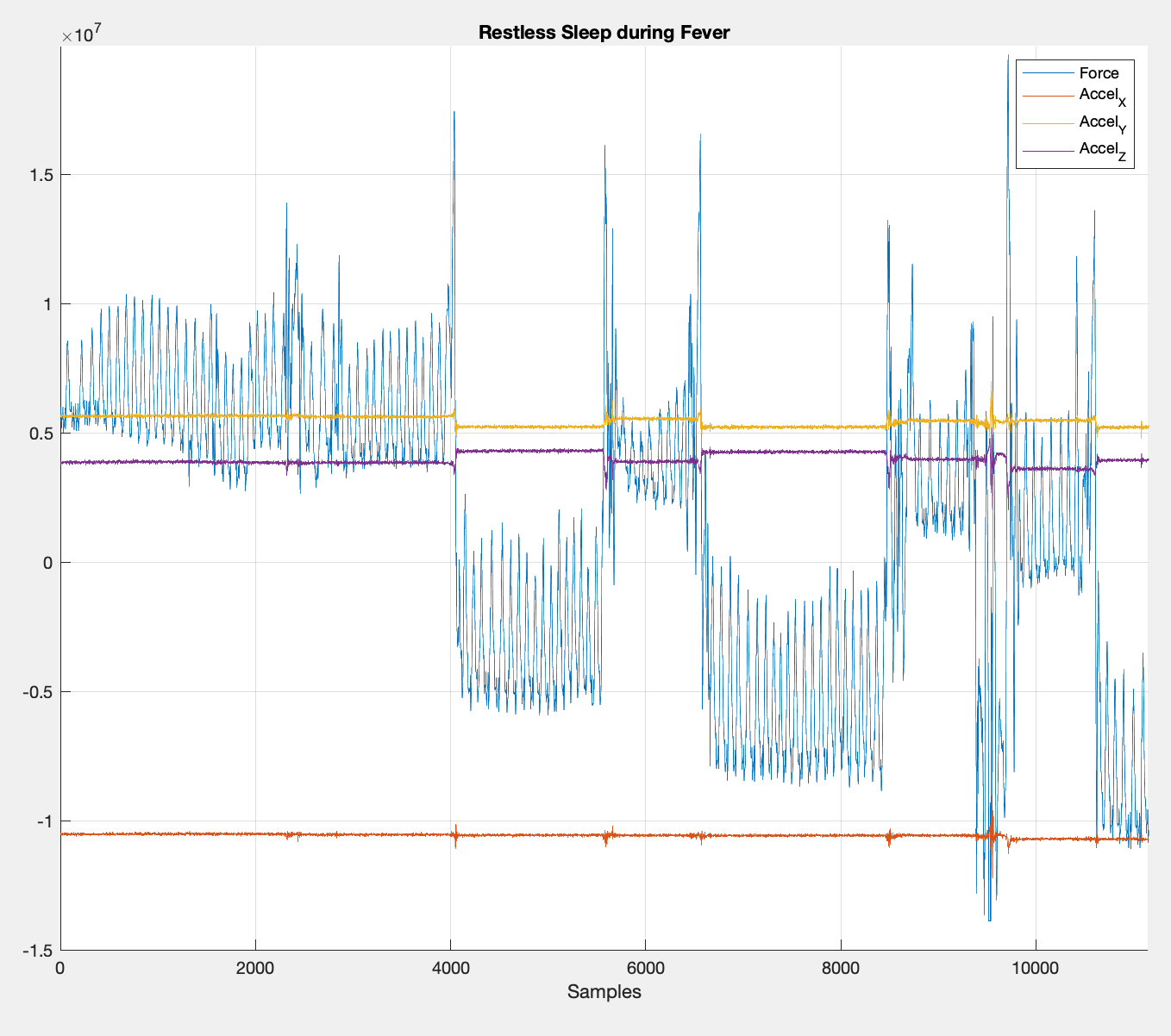

COVID-19, the disease caused by the novel coronavirus, affects lung functionality and leads to respiratory complications. It may leave long-term pulmonary health consequences. Prof. Ashok Agrawala and Prof. Nirupam Roy are developing wearable sensors and analytical systems for continuous lung function monitoring during recovery and rehabilitation. This system also targets onset prediction in healthy users and identification asymptomatic carriers through anomalies in breathing patterns.
 |
 |
|
|
|
We are able to extract a wealth of information from the respiratory patterns. In Figure 2, samples of natural breathing were retrieved for a flu patient. From this, we show an example of a cough, as well as restless behavior while the patient had incurred a fever (more specifically, the patient was in the right lateral recumbent position as indicated by the accelerometer signal). We can zoom into the breaths to identify latent changes before and after the patient became ill. Figure 3 shows a sample sneeze followed by brief laughter. Detection of such respiratory (and non-respiratory/anomalous) events will play a key role in understanding behavioral patterns.
| Faculty | Students |
 Ashok Agrawala Ashok AgrawalaProfessor Dept of Computer Science |
 Faizan Wajid Faizan WajidGraduate Student |
 Nirupam Roy Nirupam RoyAssistant Professor Dept of Computer Science |
 Mara Cai Mara CaiResearcher |